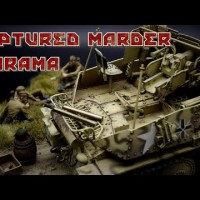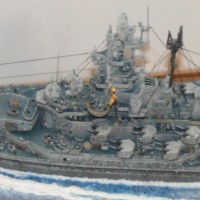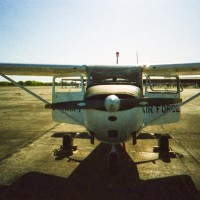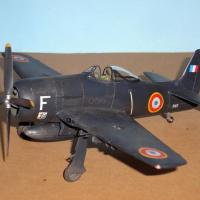Caproni Ca. 113
Here’s my latest build, the Caproni Ca-113 in 1:48, a resin kit from Planet Models. About 15 years ago I saw some Planet Models resin kits on sale at a deep discount, so I bought a half a dozen and have been building them over the years. This one has been sitting in my sash all that time, so I finally got around to it. It was pretty simple with nice resin, but the instructions didn’t address some things like rigging and small details. I found some detailed photos of the only example in existence in the Volandia Park and Aviation Museum in Milan, Italy. So, referencing those photos, I added pushrod tubes, intake pipes, wiring to the engine, and used solder to enhance the exhaust stacks. Then I scratch built a venturi tube and made a pitot tube from 27 ga. hypo needle, and added some instrument decals to the panel and added seat belts, and added rudder and aileron horns and pushrods and cables. Decals were for a machine of the Peruvian Air Force and for I-MARY, the machine in the museum. I decided on the Peruvian markings for a little more color.
The Ca. 113 was an advanced training biplane designed as a follow-on to the Ca. 100 and Ca. 109 trainers, with tandem cockpits. It made it’s first flight in 1931 and was produced in small quantities to fulfill orders from Portugal and Peru. Most Ca. 113s were produced in Bulgaria by the Bulgar-Caproni factory at Kazanlak, and were used by the Bulgarian Air Force until the outbreak of the war. It was known as the Chuchuligia (Skylark) and was produced in several versions designated KB-2, KB-3, KB-4, and KB-5. The Ca.113’s capabilities were demonstrated by Mario de Bernard when he won the aerobatic trophy at the Cleveland Air Races in 1931. Various changes were made to the original design and Ca. 113s were used to set a number of aerial records, most importantly the world altitude record of 14,433 m (47,352 ft) set by Renalto Donati on April 11, 1934, and the women’s world altitude record of 12,010 m (39,400 ft) set by Contessa Carina Negrone in 1935 and other records like the endurance records for inverted flight set by Tito Falconi at the 1933 National Air Races. He flew inverted from Los Angeles to San Diego, and later from St. Louis to Chicago.
The subject of this build was a Ca. 113 demonstrator for the Peruvian Air Force that was flown by Lt. Jose Quinones at an exhibition in 1939, where he made a low inverted pass (2-3m) down the runway. He was also the one of the first pilots to execute an outside loop, perhaps in this aircraft.















Well, there's an airplane I had previously not known it existed. Very nice work as usual, Chas. I like it a lot.
Loving this. Nice to see one made. Great job mate.
Really nice, Chas (@chasbunch). Exceptional work for a plastic kit, even more kudos considering this is a resin kit. It does have too many wings, though. :o)
An elegant aircraft and an excellent realisation of the prototype. A very nicely modelled obscure subject.
VERY cool. That aeroplane did have a lot of bracing, the wings ain't falling off this one! St' Louie to Chicago upside down...I guess that guy had no blood rushing to his head issues.
Anyway, a very well executed build.
That’s really nice! And one I never heard of.
What a beautiful plane, excellent build and love the outdoor photos, Chas @chasbunch.
A wonderful result, Chas! Well done!
Excellent work done, Chas @chasbunch
That's a really low inverted pass on that last picture, incredible.
Very nice!
Well done, Chas
Excellent piece of work. Beautiful photography as well.
Planet models are not exactly easy to build. They require a lot of work and yours turned this build into a really beautiful model of this aircraft. Thumbs up.